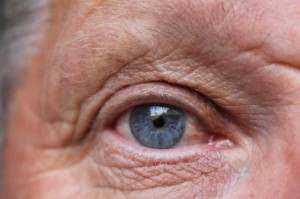
blind man is now able to see objects and people again, including his wife and family, for the first time in a decade. How? With the help of a bionic eye implant.
Affected by a degenerative condition known as retinitis pigmentosa, Allen Zderad was effectively blind, unable to see anything but a bright light. As the condition has no cure, Zderad, from Minneapolis-Saint Paul, MN, was forced to quit his professional career.
He made adjustments to his lifestyle and was able to continue woodworking through his sense of touch and spatial awareness. However, with the help of his new retinal prosthesis, Zderad is now able to make out the outlines of objects and people, and could even register his reflection in a window.
“I would like to say I think he’s a remarkable man, when you consider what he’s overcome in dealing with his visual disability,” says Dr. Raymond Iezzi Jr., an ophthalmologist from the Mayo Clinic. “To be able to have offered him the retinal prosthesis to enhance what he can already do was a great honor for me.”
Retinitis pigmentosa is an inherited condition that causes the degeneration of specific cells in the retina called photoreceptors. The disease can cause some people to lose their entire vision. Mr. Zderad’s grandson has the disease in its early stages and, after seeing him, Dr. Iezzi asked if he could meet his grandfather.
The eye implant that Zderad now has works by bypassing the damaged retina and sending light wave signals directly to the optic nerve. A small chip was attached to the back of the eye with multiple electrodes offering 60 points of stimulation.


